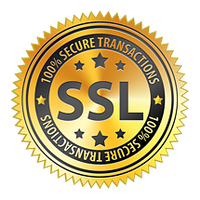This online snowboard lesson will go over Responsibility Code #1 Stay In Control. When you get on the mountain there is a safety code called the Skier Snowboarder Responsibility Code. There are 7 of them and the first one is the most important Staying In Control. People might think staying in control is pretty obvious but I see folks going out of control all the time. Beginners just learning how to snowboard and ski don’t know how to steer well. They might get out of control and hurt themselves or others. I don’t like it but I will usually get hit a few times every year by out of control riders or skiers. When you feel out of control slow down or stop. Other Snowboard Videos on YouTube & Flowing Freeride go over equipment to keep you safe out on the mountain. You’ll have access to all our snowboard tutorials when you signup that cover every step and feedback from your coach. We also have some free snowboard videos to prepare for snowboard safety on our YouTube Page. I recommend watching these snowboard videos; Snowboard Responsibility Code #2, Snowboard Responsibility Code #3, Snowboarder Responsibility Code #4 Look Uphill, Snowboard Responsibility Code # 5, #6 Obey All Signs, Snowboard Responsibility Code #7, Beginner Snowboard Lesson on Steering, Toeside Heelside Stance, Learn How To Ride The Lifts Safely, How to Snowboard: Balance Twist & Beginner Snowboard Stance. Learn to snowboard online with flowingfreeride.com, Take Our Placement Quiz, take a look at Our Blog for more free content, and Learn To Snowboard Right!
People started coming to my snowboard lessons years ago saying they learned how to snowboard watching YouTube videos. I couldn’t believe some of the info that they were coming to class with. A lot the advice and techniques were totally the opposite of correct techniques. That’s what prompted me to create Flowing Freeride Pro Snowboard Lessons an online snowboard school. I wanted to teach proper techniques through snowboard video tutorials that would be a perfect companion to real snowboard lessons. My techniques are going to be similar to the lessons at resorts. I want my students to come to my snowboard lessons having the right knowledge. I also want everyone to have some basic knowledge of safety on the mountain to prevent injuries. I love snowboarding and don’t want some gaper to hurt me or others because they’re out of control and can’t stop. A lot of my videos teach you how to steer and stop, load the lift and to be safe. This will increase your skill levels, mastery time and keep you safe.
If you’re unable to stay in control you’re “over terraining” yourself or your going on terrain that is out of skill level. You need to be on a run with less slope. If you can’t steer or stop in the learning area then don’t go up the lift and expect you’ll be able to stop there. I’m on the mountain almost everyday during the season and I usually get hit a few times every year. It sucks but there are idiots out on the mountain. I use all my senses especially hearing when I can’t see. If I hear the sound of someone near me I put me head on a swivel and brace for impact. I look uphill a lot for my protection. Looking Uphill Is #4 of the Code and is something you should do to keep safe. I will stop people that are out of control and will take their pass when I’m in uniform. If I see they are just struggling because of their skill level I will recommend they take a lesson, give them my info to FFR Pro Snowboard Lessons Online and then help them down the run safely. Most people don’t work on the mountain so if you do see erratic behavior call ski patrol, talk to mountain safety or a lift operator.
I know where traffic is going to be when I’m out on the mountain. Near the bottom where the lift line starts is always heavy traffic. It’s where trails funnel together and merge. Be extra careful in these areas. Most trail maps do having warnings on the map where there’s high traffic or slow areas. Look if you’re going out of control Review Lessons On Steering and private lessons helps a ton. Take your time when making turns and don’t force it, let it flow naturally. You’ll be Flowing Freeride soon just follow the instructions. You can practice efficiently and get Hooked On Snowboarding with Snowboardclass/FlowingFreeride’s techniques so go back to other snowboard videos that teach you about other snowboard equipment. You can signup to get access to all of our snowboard lessons, study guides, textbooks, glossary, tests and direct feedback from your coach. Learn to snowboard online with flowingfreeride.com and take a look at our YouTube Page for more free content and learn to snowboard right! My name is Blake Tholen Clark Contact Me if you want to book a lesson or have any questions about Snowboarding.


